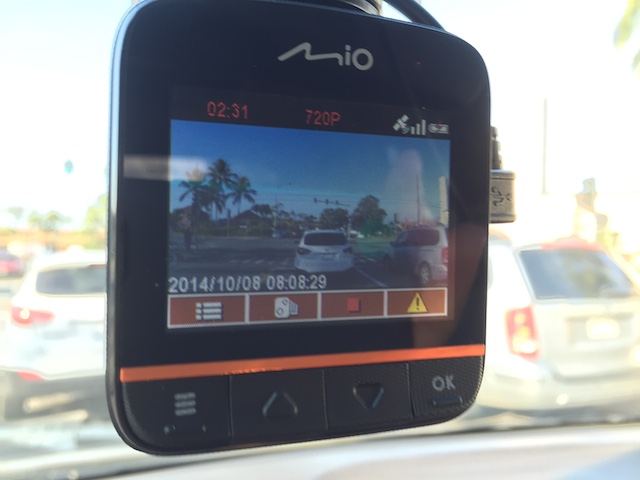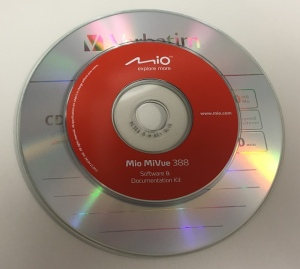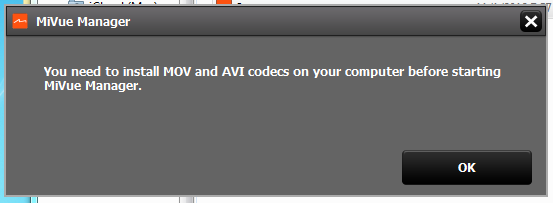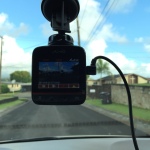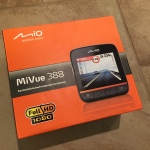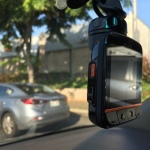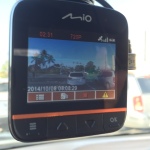Two Weeks with the Mio MiVue 388
After two weeks of driving with the Mio MiVue 388 in-vehicle digital video recorder, I have seen the automotive industry’s accessory of the future. I have no doubt that soon enough, every vehicle on the road will be equipped with cameras.
[box type=”info” style=”rounded”]Disclosure: I was loaned a Mio MiVue 388 from FUSH Enterprises to review. No strings attached other than just try it out and say what I thought about the product.[/box]
What is the Mio MiVue?
Simply, the Mio MiVue is a “dashcam,” or a video recorder mounted on the inside of a vehicle’s windshield. Forward facing, the MiVue records a wide angle view, and there’s not much more to it. As long as you’re driving, the MiVue is saving what’s happening in front of your car. You get it? No? Then let the Click Chick, Allison Young, explain it to you in her Midweek Lifestyle column.
Designed for Driving
Don’t think the MiVue is just any mounted video recorder. This isn’t a GoPro or smartphone mounted inside your car. The MiVue was designed for driving. It’s compact with a simple setup and intuitive controls. Initially, I thought the MiVue had a touchscreen but smartly, there are four hard buttons instead. Imagine trying to set controls on a GoPro or iPhone in a moving car. Just too dangerous, but the four hard buttons are a perfect balance of controls.
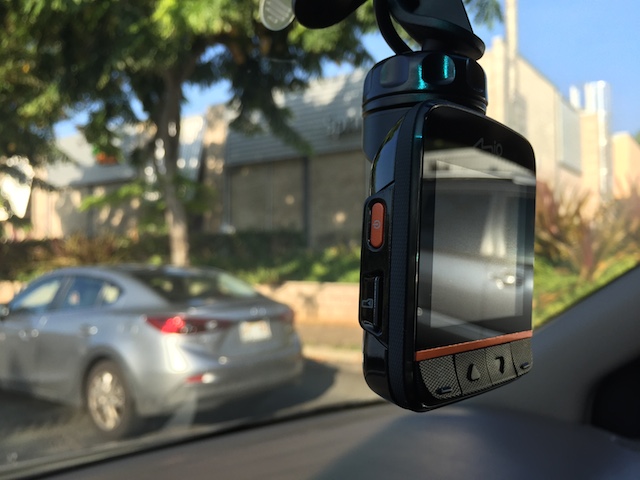
The MiVue was meant to be unobtrusive, not needing undue attention from you the driver. As soon as you start your car, the MiVue begins recording. The HD videos are clipped every five minutes, so you don’t have to scan through one gigantic video stream. Storage is provided by a micro SD card (up to 32 GB). When storage capacity is low, older video clips are recycled to make space for newer recordings (except for emergency recordings, see below). The MiVue’s rechargeable battery is charged from the ubiquitous cigarette lighter using the included long mini USB cable. GPS coordinates and motion sensor data is overlaid with the video, providing details of driving conditions. But you don’t have to know any of this, the MiVue is designed to take care of it all.
Mio MiVue in Action
Let’s take a look at the Mio MiVue 388 in action.
[youtube https://www.youtube.com/watch?v=PQjVoDqop2k]
Just a note about that simulated emergency recording at the 0:21 mark. I learned of the MiVue’s emergency recording feature when my MiVue accidentally dislodged after hitting a bump in the road. Any sudden motion (like a car collision) activates an emergency recording that is retained until explicitly deleted – a well thought-out feature.
Before the Future
Overall, the Mio MiVue 388 is a solid product, but before we get to the future, there are some things to address in the present.
More Retention. By default, the MiVue records videos at 1080p quality which makes for clear and crisp movies that are very large. Even with a 32-GB microSD card, less than one week of video can be retained. This is for typical to-and-from-work commutes. So if you need to retrieve a video clip, be prompt about it. It’d be better if at least one week’s worth of video could be retained.
No WiFi Streaming. To watch the recordings, you have the option of using the built-in screen, extracting the video from the SD card, or connecting an HDTV to the MiVue’s HDMI port. I kind of wish the MiVue included a streaming WiFi option similar to the GoPro where you can wirelessly stream the recorded video to another device’s (larger) screen. But this is a “nice to have” that will compromise battery life.
Dark 720p Video. To reduce file size, I scaled back video quality dropping to 720p (the only other available option). Oddly, the video recorded was very dark. I didn’t do extensive testing, so I’m purely guessing that some firmware tweaks are needed to improve light pickup in 720p mode.
Software and Installation. On the software side, Windows is apparently the supported platform with the software supplied on a mini CD. Now, here’s my personal dilemma. I run Mac OS X, not Windows. However, I have Parallels Desktop letting me run Windows virtually. But I also have a MacBook Air without an optical CD drive. I do have an external optical drive that’s slot loading. Mini CDs need tray-loading mechanisms, playing havoc with slot loaders. I managed to find a Windows machine with a tray-loading CD burner and transferred the MiVue software to a regularly sized CDR. A standard size CD fits in the MiVue box so I don’t see why even bother with a mini CD?
Then during the software installation, I got this error.
Searching Google yielded this first search result. The solution is to download the latest MiVue Manager software (which I could not previously find online), and as a bonus, there are download links for Windows and Mac OS X! Not all the features are currently available on the Mac version though, but in my testing, the Mac OS X version works just fine. You can see the GPS and sensor information overlaid on the recordings and can also save image stills and recorded videos.
Current Uses and the Future
While the dashcam has caught on in some parts of the world, it isn’t globally popular. Sure a dashcam is cool for lifestreaming purposes to show yet another aspect of your day. You could probably make some fun time lapse videos of your commute or capture random tidbits that happen out of the blue (when’s the last time you saw a marching band going down the street with cars driving by?). Of course, in Hawaii, there’s always that gorgeous scenery you wish you could capture and take with you. Heck, if I were a driving instructor, I would record every student’s first time out on the road and present them with their video at the end of their instruction. But typically, the dashcam has been used to record evidence of vehicular mishaps, usually intentionally caused by others for insurance shenanigans. So other than self-protection, why should an in-car camera be part of the automotive accessory’s future? Because it’s already happening.
Rear mounted cameras that assist while reversing have been popular for years, and more recently, self parking vehicles use cameras to guide their parking maneuvers. Now look at the recently announced Tesla Dual Motor Model S with Autopilot. Along with radar and sensors, the Dual Motor Model S has a forward looking camera to provide a safer driving experience. Safer is good, and maybe one day, self driving cars will be a reality (or maybe not).
Take this a few years out. Of course privacy concerns are a big issue, but just imagine if all these in-car cameras could be tapped into collectively when needed. A vast search grid could be created wherever there’s a vehicle. An Amber Alert for missing children would have more eyes on the lookout. With recorded videos, unsolved crimes could get new leads.
We are already witnessing the gradual proliferation of in-car cameras. Why not be part of this future with the Mio MiVue?
Where to Get a MiVue
In Hawaii, contact FUSH Enterprises for information on how to get your own Mio MiVue.
- Phone: 808-227-9975
- Email: fushenterprises@gmail.com
Other MiVue 388 Reviews
- Mio MiVue 388 Drive Recorder review (TrustedReview)
- Your last line of on-road defence (TechRadar)
- On The Road To Test The Mio MiVue 388 Dash Cam (Midweek)
More Mio MiVue Media
Russian greetings
